Now I’m assuming (I know, ass/u/ming) that the volume of potash imported from Russia to America of 11% in 2023 has decreased since that whole Ukraine invasion (I mean, I could be wrong here), and someone other that Belarus has been making up that shortfall? Rhymes with Zanada?
US Lifts Belarus Potash Sanctions After Lukashenko Releases 123 Political Prisoners, Including Nobel Laureate — Benzinga
The United States lifted sanctions on Belarusian potash exports on Saturday after Belarusian President Alexander Lukashenko freed 123 political prisoners, the largest release since diplomatic talks between Washington and Minsk began. Trump Envoy Negotiates Prisoner Release The release came after...

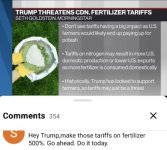

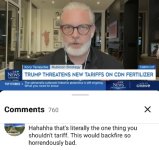
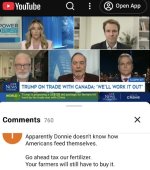
The United States lifted sanctions on Belarusian potash exports on Saturday after Belarusian President Alexander Lukashenko freed 123 political prisoners, the largest release since diplomatic talks between Washington and Minsk began.

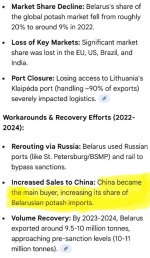
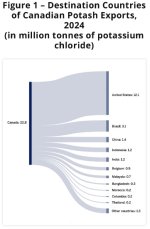

Canada supplies the vast majority of potash to the U.S., with recent data showing it accounts for over 80% to 87% of U.S. imports, primarily from Saskatchewan mines, a crucial source for American agriculture. The United States produces a very small percentage of its annual potash use domestically, typically around 2% to 10%, with recent data from 2023 and 2024 indicating a domestic production share closer to 2%.
America imports most of its potash because domestic reserves aren't enough to meet huge demand, Canadian potash is geographically close, cheaper to transport, and readily available via established infrastructure, unlike costly overseas options from Russia or Belarus which face political issues.
Developing new U.S. mines is time-consuming and expensive, and relying on other global suppliers introduces geopolitical risks and higher shipping costs…so maybe Trump can kickstart that before the 2026 planting season in…about 6-8 weeks or so?